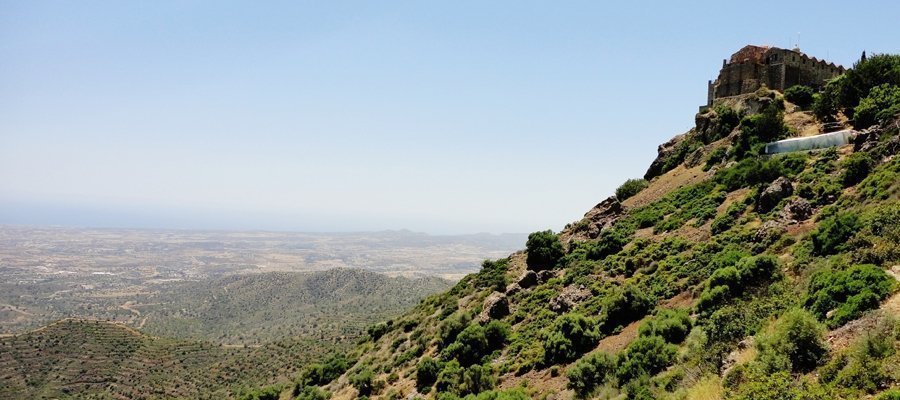Take a journey through the picturesque rural areas of the eastern part of the island, where traditional charm has been retained – and continues to defy the hands of time.
The route begins in the Ammochostos (Famagusta) area to visit the farming villages that are collectively known as ‘Kokkinochoria’. Comprised of the two Greek words for ‘red’ and ‘villages’, their name perfectly reveals that it is here that the abundance of the island’s potatoes, strawberries and watermelons are grown, in mineral-rich red soil that gives them a deliciously distinctive taste.
Heading further towards Larnaka (Larnaca), the Greek Orthodox monastery of Stavrovouni sits perched up high on a mountain peak, breathtakingly isolated and straight out of a classic painting. Savour the view before heading for the quaint mountainous village of Lefkara – famous for its handmade lace and filigree silver.
A stroll through its narrow winding lanes will take you past traditional terracotta-roofed houses, where the ladies of Lefkara sit outside, busily hand-embroidering intricate lace linens known as ‘Lefkaritika’. This skilled art has been practised exclusively in Lefkara since Venetian times (1489-1570 AD), when the village was a holiday resort for nobles, and the Venetian noblewomen taught the locals how to make the exquisite drawn-and-counted thread embroidery. The linens became an important trade for Lefkara and were world-renowned, and even the great painter Leonardo Da Vinci bought a large tablecloth for the altar of the Milan Cathedral when he visited the village.
In workshops across Lefkara, a second folk art is also still thriving – that of silverware, and the delicate craft of filigree jewellery known as ‘trifouri’. The cobweb effect of the beautiful handmade earrings, pendants and brooches is created by twisting fine silver wire into various designs. Enjoy a touch of traditional shopping for lace, silverware and other local products before stepping into the Folklore Museum for a journey back in time.
Finally, the adjacent village of Kato Drys (‘lower oak’ in Greek) is equally beguiling with its traditional architecture, beautiful views and interesting museums.
Courtesy of the CTO






